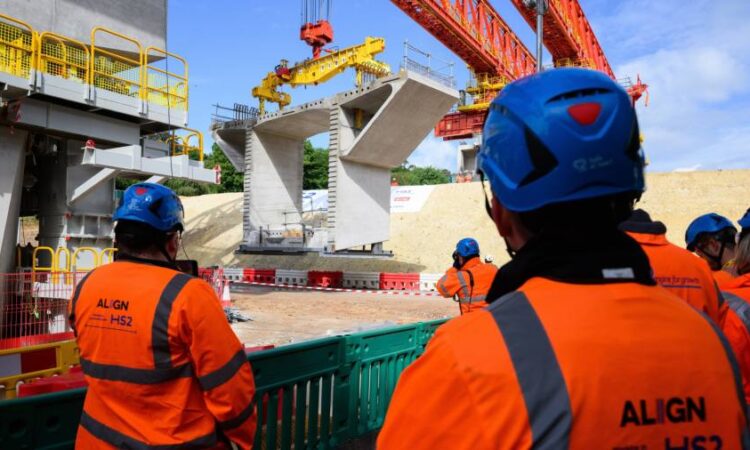
Capital spending and Liz Truss’s plans for “investment zones” are among the areas facing cuts in the government’s autumn statement, as chancellor Jeremy Hunt seeks public spending reductions and tax rises worth up to £50bn a year.
Michael Gove, levelling up secretary, said on Sunday that “some capital spending will be cut”, in a sign that projects intended to boost economic growth in the long term could be delayed or axed.
Asked whether HS2, the high speed rail link from London to northern England, could be subject to cuts, Gove told Times Radio: “I am sure everything will be reviewed.”
However Rishi Sunak, prime minister, has vowed to implement the Tories’ 2019 election manifesto. “Levelling up” left behind areas, partly through infrastructure projects, was a flagship pledge.
A government spokesman said: “HS2 is under way, within budget, and supporting 28,000 jobs. The government remains committed to delivering it on time and to budget.”
The Financial Times last month revealed fresh cost overruns on HS2.
Gove confirmed Hunt was prepared to make difficult choices in his fiscal plan, saying: “When we face the particular economic problems that we have at the moment, I’m sure that some capital spending will be cut.”
Meanwhile, Gove also confirmed a review was under way into the “investment zones” proposed by Truss while prime minister — local areas that would involve tax breaks and reduced environmental protections.
Gove said the government would not undermine environmental protections.
One Whitehall insider, referring to the planned investment zones, said: “They cost a lot of money and seem to deliver few benefits.”
The Treasury has been determined to rein in the scale and scope of the zones after one preliminary estimate suggested they could create a tax liability of up to £12bn.
Gove also said he could not guarantee that state benefits would rise in line with inflation next year.
Ministers are preparing the public and business for significant tax rises and spending cuts in the autumn statement on November 17, which Hunt will use to show how debt can fall as a share of gross domestic product in the medium term.
Sunak, writing in the Mail on Sunday, said that “we will sometimes have to take the difficult path”, but his approach would provide “compassion” to the most vulnerable.
Hunt is preparing a higher windfall tax on UK oil and gas producers — possibly increasing the rate from 25 per cent to 30 per cent — and is expected to extend the lifetime of the levy from 2025 to 2028.
Electricity generators that produce power from renewable sources and nuclear, and currently benefit from contracts linked to gas prices, will also be hit by a windfall levy, according to people briefed on Hunt’s thinking.
Meanwhile, a special windfall tax on bank profits is not on the table, added these people.
A decision on the level of the bank surcharge — an extra levy paid by banks on top of corporation tax — that will apply from next April has not been taken.
Corporation tax will increase from 19 per cent to 25 per cent from April, as proposed by Sunak when he was chancellor.
However, Hunt has been silent on the fate of the 8 per cent bank surcharge, which if left unchanged, would take the effective tax rate for banks to 33 per cent from April.
Sunak, as chancellor, envisaged an effective tax rate of 28 per cent for banks — with corporation tax at 25 per cent and the bank surcharge cut to 3 per cent — and may decide to stick to that policy, said government insiders.
The Treasury said Hunt will “confirm the position on the bank surcharge in the medium term fiscal plan”.






